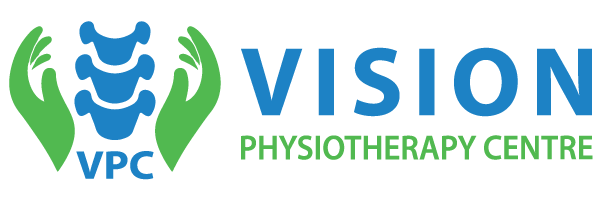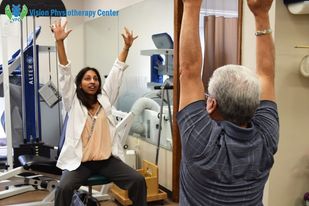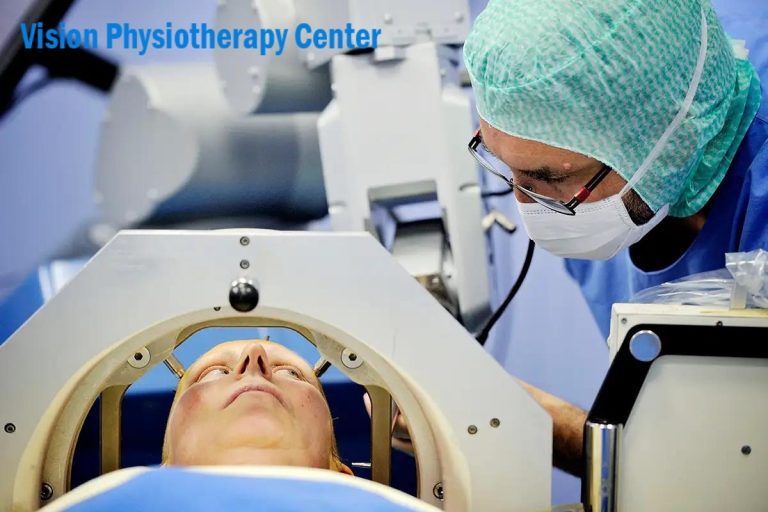Parkinson’s disease is a neurological condition that affects various aspects of an individual’s life, including movement and overall well-being. Most individuals affected by Parkinson’s disease may not be fully aware of what are the effects of physiotherapy in Parkinson’s disease.
Physiotherapy plays a crucial role in helping individuals with Parkinson’s disease improve their motor function, manage pain and musculoskeletal issues, enhance balance and postural stability, and alleviate symptoms such as rigidity and freezing of gait.
It also provides non-motor benefits by improving quality of life and mental well-being. By combining medication and physiotherapy, a holistic approach can be adopted to address both the motor and non-motor symptoms of Parkinson’s disease.
In this systematic review and meta-analysis, we will explore the effects of physiotherapy on Parkinson’s disease and discuss the emerging trends and innovations in this field. Join us as we uncover the significant contributions of physiotherapy in managing and improving the lives of individuals with Parkinson’s disease.
Lee Silverman Voice Treatment: The Role of Physiotherapy in Improving Motor Function & Enhancing Speech in Parkinson’s Disease
Lee Silverman Voice Treatment improves motor function in people with Parkinson’s disease through specific physiotherapy exercises that aim to enhance mobility, balance, and coordination.
These exercises target strength, flexibility, and range of motion, enabling individuals to regain control over their movements and reduce the risk of falls.
Additionally, physiotherapists offer valuable guidance on posture and movement, empowering patients to actively engage in their treatment and ultimately improve their overall quality of life.
The Role of Physiotherapy in Managing Pain and Musculoskeletal Issues in Parkinson’s Disease
Physiotherapy plays a crucial role in managing pain and musculoskeletal issues in individuals with Parkinson’s disease, positively impacting their overall well-being and functional abilities. If you want to know what are the effects of physiotherapy on Parkinson’s disease or the impact of it according to Parkinson’s disease physiotherapy guidelines.
You should know that physiotherapists target specific areas of pain and discomfort through a combination of manual therapy techniques, stretching exercises, and strengthening exercises. They aim to improve joint mobility, reduce muscle stiffness, and address musculoskeletal imbalances.
Through individualized treatment plans, physiotherapy helps reduce pain, enhance flexibility, and improve musculoskeletal function. This leads to an increase in movement control, functional independence, and quality of life in people with Parkinson’s disease. Physiotherapists also use movement strategies to overcome the common difficulties in movement associated with Parkinson’s disease.
The Impact of Physiotherapy on Balance and Postural Stability in Parkinson’s Disease
Physiotherapy significantly enhances balance and postural stability in patients who have Parkinson’s disease. Some exercises during treatment strengthen the core muscles, enhance flexibility, and provide better coordination to reduce incidents of falls. Hence, they promote posture to enable patients to regain control and mobility with more independence.
Physical Therapy for Parkinson’s Gait and Enhancing Mobility
Physiotherapeutic techniques improve mobility and gait in patients with Parkinson’s disease. Exercise can strengthen muscles, enhance balance and coordination, and rectify gait disturbances. Personalized treatment plans help individuals regain the potential for movement control, confidence in walking, and overall functionality.

Exercise-Based Physiotherapy: A Boon in the Management of Parkinson’s Disease
Exercise-based physiotherapy confers significant benefits in the management of Parkinson’s disease.
– It enhances strength, flexibility, balance, and coordination.
– Regular exercise-based physiotherapy can reduce symptom severity and enhance mobility.
It assists in managing motor fluctuations, reducing the risk of falls.
– Exercise-based physiotherapy has psychological effects, improving moods and soothing stress.
– It increases self-confidence and empowers individuals to take control of their health.
How Physiotherapy Can Help Alleviate Rigidity and Bradykinesia in Parkinson’s Disease?
Physiotherapy is important in managing rigidities and bradykinesia, two of the cardinal features of Parkinson’s disease. With appropriate techniques and exercises, the physiotherapist tries to alleviate rigidity and improve the speed of movement.
They work on stretching, range-of-motion exercises, and specialized techniques to enhance flexibility and counteract the slow movement associated with bradykinesia. Physiotherapy interventions tailored to a person’s individual needs can quite effectively reduce the impact of these symptoms, allowing people with Parkinson’s disease to feel freer in their movements and function better overall.
The Role of Physiotherapy in Managing Freezing of Gait in Parkinson’s Disease
Physiotherapy can help alleviate symptoms such as rigidity and bradykinesia of Parkinson’s disease. Certain techniques and exercises in physiotherapy help reduce muscular rigidity and increase the speed of movement.
They concentrate on stretching, exercises of the range of motion, and special techniques to help improve flexibility and counteract the slowness in movement caused by bradykinesia. Physiotherapy tailored to individual needs reduces these symptoms and can help people with Parkinson’s disease enjoy their ability to move and function better overall.
The Effectiveness of Physiotherapy in Reducing Falls and Fall-Related Injuries in Parkinson’s Disease
Physiotherapy is highly effective in reducing falls and fall-related injuries in individuals with Parkinson’s disease. Physiotherapists enhance stability and mobility through targeted exercises, balance training, and gait improvement techniques that reduce the risk of falls.
They work on symptomatic strengthening of the key groups of muscles, enhancing coordination, and addressing specific factors contributing to falls, such as postural instability. This individualized treatment approach through physiotherapy helps patients with Parkinson’s disease regain confidence in their movements and significantly decreases the incidence of falls and fall-related injuries.
Non-Motor Benefits of Physiotherapy in Parkinson’s Disease: Improving Quality of Life and Mental Well-being
Physiotherapy in PD improves quality of life and mental well-being by improving overall functioning, reducing anxiety and depression, and promoting a feeling of empowerment and control. Since it deals with holistic well-being, physiotherapy helps improve the quality of life.
Combining Medication and Physiotherapy: A Holistic Approach to Parkinson’s Disease Management by Physiotherapist
Combining medication and physical therapy is the most effective strategy for treating Parkinson’s disease. This integrated strategy addresses every facet of the illness. While physical therapy helps with movement, balance, and general functioning, medications help address the chemical abnormalities in the brain.
When combined, medicine and physical therapy can successfully manage motor symptoms, lower the chance of falls, enhance quality of life, and advance general health. For those with Parkinson’s disease, this integrated approach guarantees a more thorough and individualized treatment regimen.
The Impact of Physiotherapy on Cognitive Function in Parkinson’s Disease
Physical therapy can help people with Parkinson’s disease improve their thinking skills. Special exercises can help them focus better, remember things, and make decisions more easily. Physical activity is good for the brain and helps people think more clearly. Since Parkinson’s affects both movement and thinking, physical therapy is very important for improving overall cognitive function.
What are the effects of physiotherapy in Parkinson’s disease: Enhancing Respiratory Function?
If we want to answer the question about the effects of physiotherapy on Parkinson’s disease, the answer is that Physiotherapy can improve motor function, balance, and overall quality of life. That means physiotherapy plays a vital role in enhancing respiratory function in individuals with Parkinson’s disease.
Some physiotherapists help increase lung capacity, strengthen respiratory muscles, and establish an efficient breathing pattern by using particular physical exercises, breathing techniques, and chest physiotherapy.
These therapies aid in the treatment of frequent PD respiratory symptoms, including decreased lung capacity and trouble expectorating or coughing. For those with Parkinson’s disease, physiotherapy maximizes respiratory function to maintain overall health, stamina, and quality of life.
Emerging Trends and Innovations in Physiotherapy for Parkinson’s Disease
Treatment options for Parkinson’s disease are expanding because of advancements in physiotherapy. Robotics and virtual reality technologies improve motor function, and tele rehabilitation makes rehabilitation more accessible. As a result of these trends, Parkinson’s disease patients benefit from improved care and a higher quality of life. But in this case, the expense of physiotherapy must be taken into account.
Repetitive Transcranial Magnetic Stimulation (rTMS) for Parkinson Advance Treatment in Physiotherapy Intervention
rTMS (repetitive transcranial magnetic stimulation) has emerged as an advanced treatment option for Parkinson’s disease, offering promising results. It involves using magnetic fields to stimulate parts of the brain in a non-invasive way to alleviate motor symptoms and generally improve motor function.
rTMS is considered to modulate abnormal brain activity associated with Parkinson’s, thus serving as a potential alternative or complementary therapy to medications. As research in this area continues, so does the bright future of rTMS in improving the quality of life for people with Parkinson’s by offering a targeted and safe treatment approach.
rTMS has shown promising effects on the activities of daily living in patients with Parkinson’s disease. The activities of daily living are the basic tasks involved in self-care and independent living, including dressing, bathing, eating, and mobility.
Conclusion
I hope you will understand the effects of physiotherapy on Parkinson’s disease and agree that physiotherapy has a critical role in its management. The physiotherapeutic management of Parkinson’s disease offers numerous benefits: improvement in motor function, balance, and mobility; pain management; improvement in cognitive function; and respiratory function.
Physiotherapists can thus help people with Parkinson’s disease take control through an individualized treatment plan and specific interventions that enhance the quality of their lives. A combination of medication and physiotherapy ensures comprehensive management, both for motor and non-motor symptoms.
Trends and novelties in the field of physiotherapy, like virtual reality and telerehabilitation, follow next and create some interesting prospects in an effort to improve treatment options and individual results in people with PD.
Recognition of the important contribution that physiotherapy can make in tackling the challenges that might be faced with PD helps a lot in further caring and treating patients by generally improving the state of health.
Written by.
Dr. Saiful Islam, PT
BPTh (DU), MPTh (Orthopedics) – NIPS, India
PG Certificate in Acupuncture, India
Specially trained in Ozone Therapy, USA and Ozone Forum, India.
Physiotherapy Consultant, Vision Physiotherapy Center.
To consult: 01760-636324 , 01932-797229 (9:00 AM to 9:00 PM) and make an appointment.
Our Facebook page: Vision Physiotherapy Center





